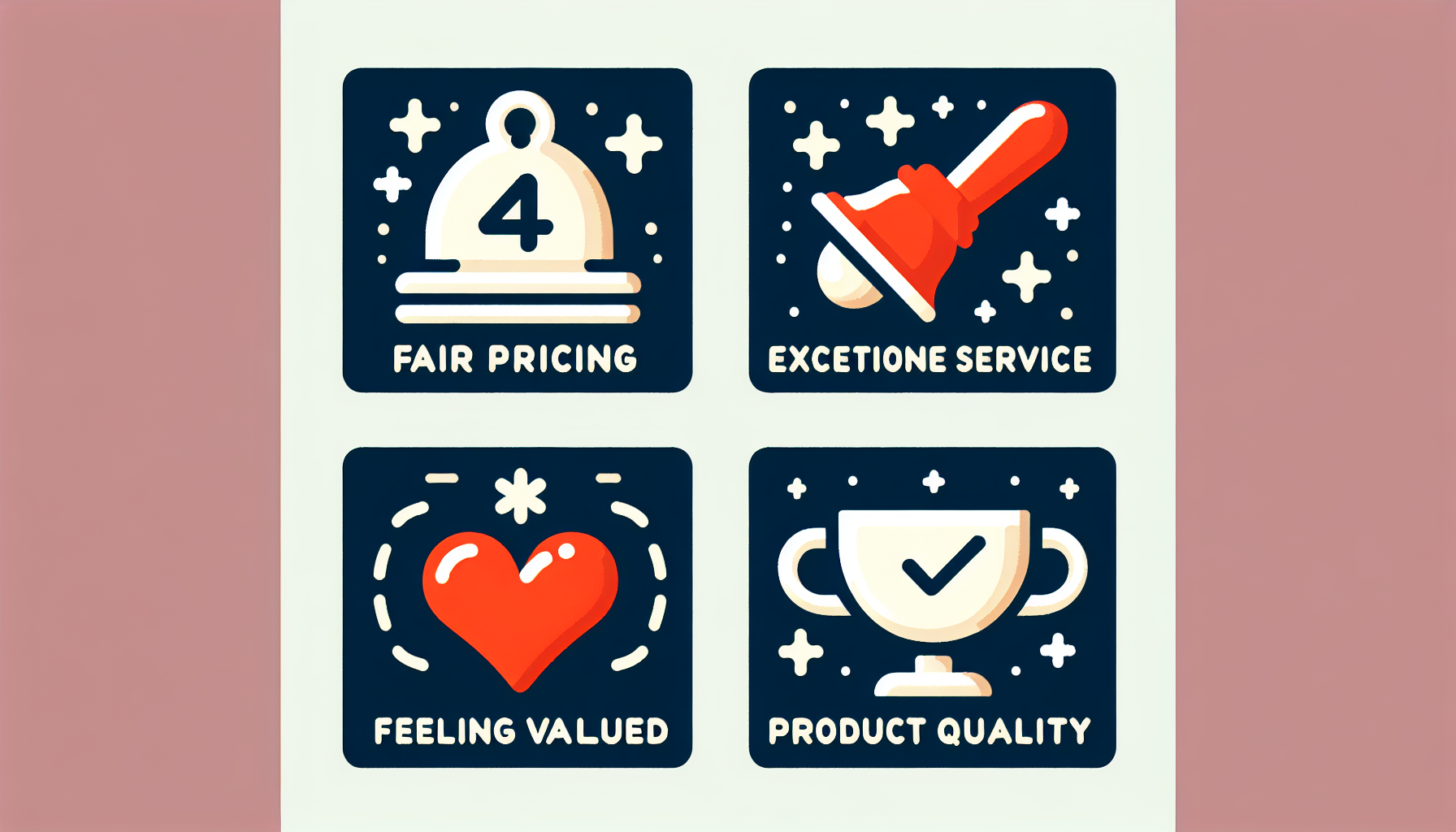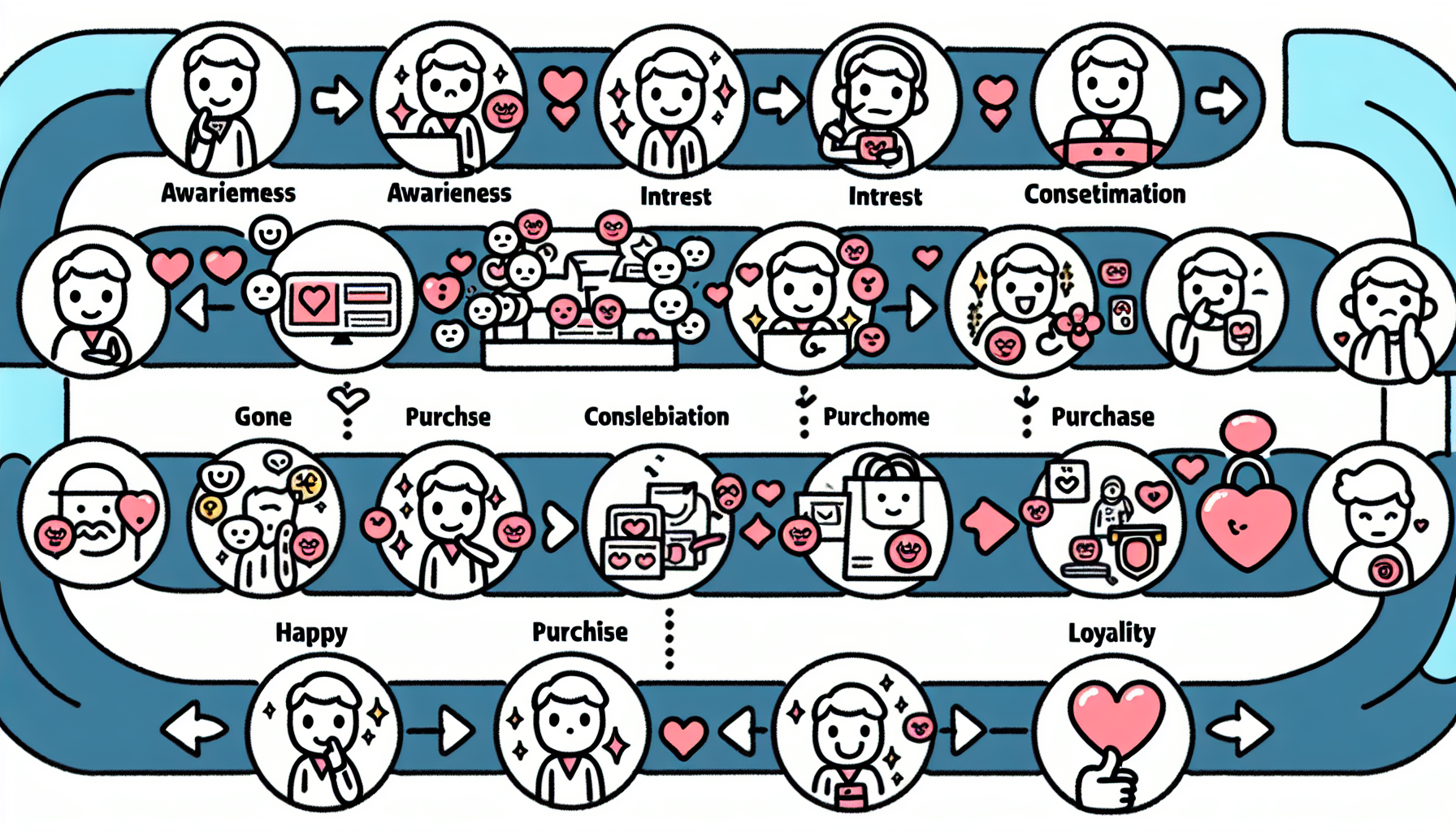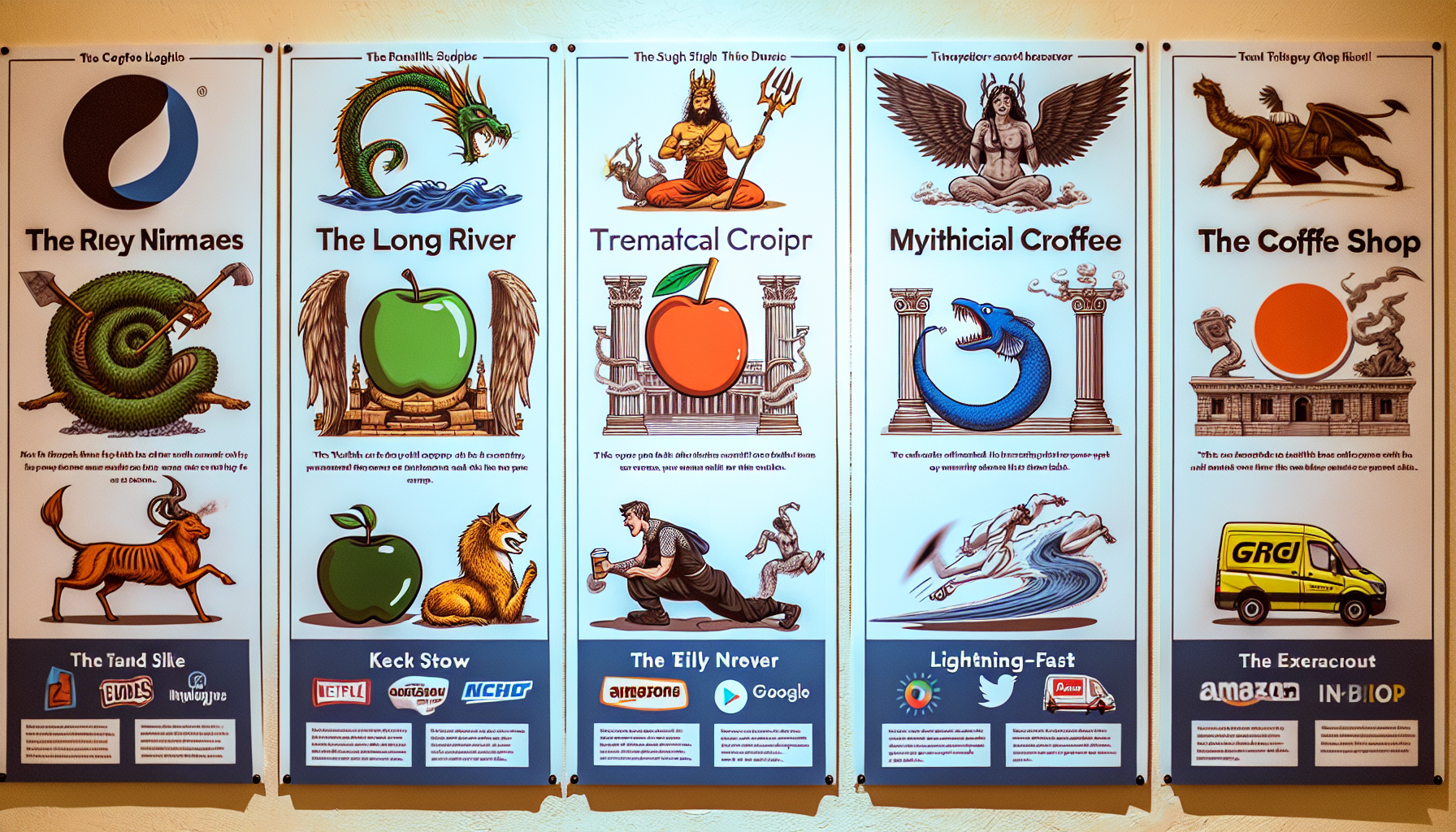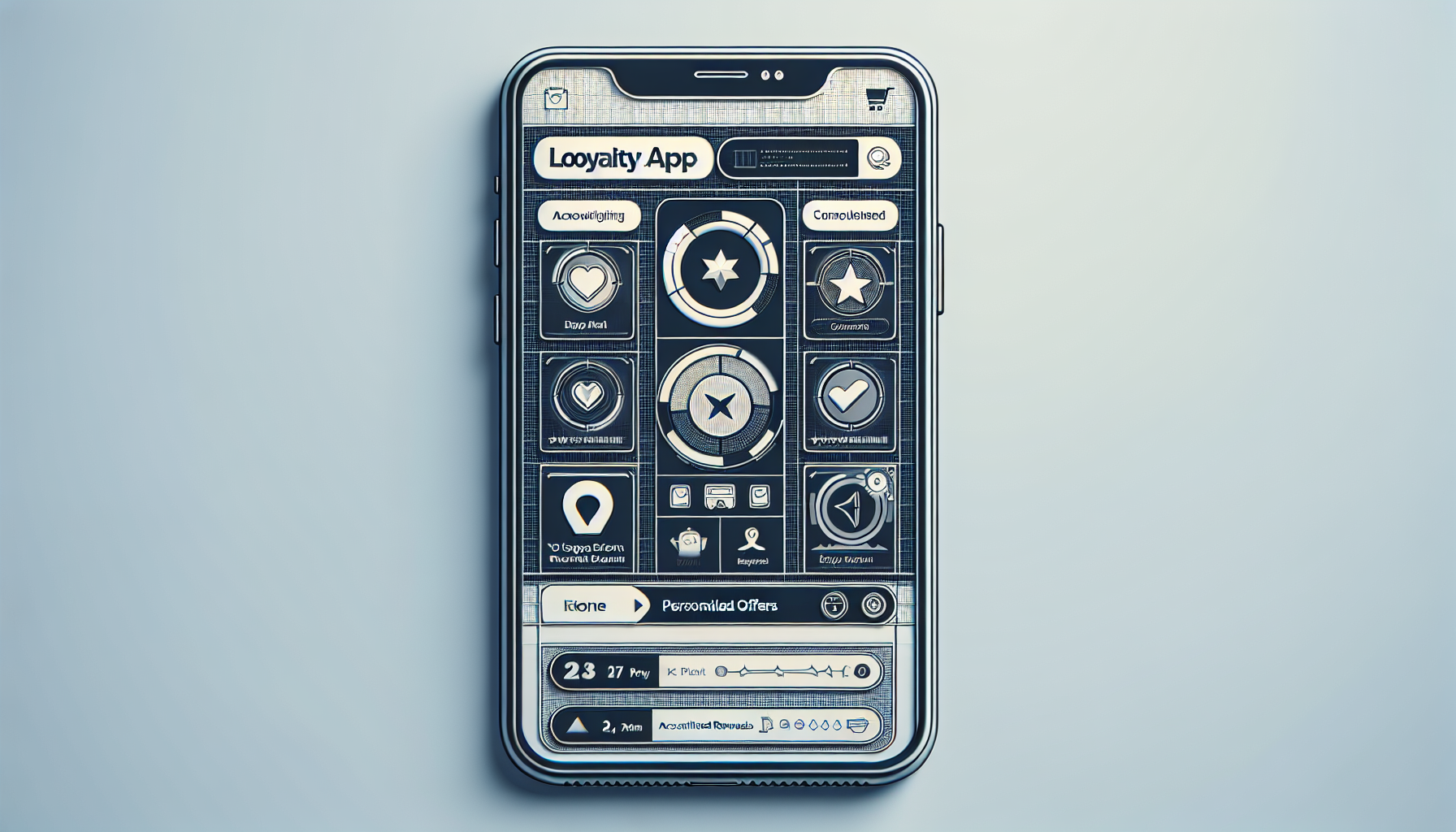Understanding Customer Needs To Increase Your Sales and Customer Loyalty
Understanding customer needs is the cornerstone of any successful business. In today's competitive landscape, recognizing what drives your customers' decisions and addressing their expectations can set your brand apart. Meeting these needs not only fosters customer satisfaction but also builds long-term loyalty, making it easier to achieve sustainable business growth.

This article will delve into:
- The Essence of Customer Needs: We'll define what customer needs are and why they matter for businesses.
- Key Customer Needs That Drive Satisfaction and Loyalty: Discover four core needs crucial for customer retention.
- Conducting a Comprehensive Customer Needs Analysis: Learn methods for gathering actionable insights.
- Leveraging Technology to Meet Evolving Customer Needs: Explore how tech tools can keep you attuned to customer expectations.
- Strategies for Anticipating and Meeting Customer Needs Proactively: Practical tips for staying ahead of customer demands.
- Enhancing Customer Experience through Journey Mapping Techniques: Utilize journey mapping to improve interactions.
- Building Trust and Loyalty through Excellent Service Delivery Practices: Actionable steps for delivering outstanding service consistently.
- Case Studies: Real-world examples of companies excelling in understanding customer needs.
- Practical Steps to Address Customer Needs using Lealtad App: A guide on how our app can help manage loyalty programs effectively while ensuring privacy and providing seamless intake processes and submission handling.
By the end of this article, you'll have a comprehensive roadmap for understanding and meeting your customers' needs, propelling your business towards greater success.
Understanding Customer Needs

What Are Customer Needs?
Customer needs are the essential desires and requirements that drive individuals to seek out and purchase products or services. These needs can dictate their buying behavior, brand loyalty, and overall satisfaction. Understanding customer needs is crucial for businesses as it allows them to tailor their offerings, ensuring they resonate with their target audience.
The Different Types of Customer Needs
Customer needs can be categorized into three main aspects:
- Functional Needs: These relate to the practical or utilitarian aspects of a product or service. Customers seek solutions that effectively address their problems or fulfill specific functions. For instance, a smartphone's functional need might include a long battery life and high processing speed.
- Emotional Needs: Emotional needs pertain to the feelings and psychological benefits customers derive from a product or service. This includes aspects such as comfort, security, or excitement. A luxury car brand, for example, might fulfill an emotional need by providing a sense of prestige and accomplishment.
- Social Needs: Social needs involve the desire for connection and acceptance within a community or social group. Products that help customers express their identity or align with their social circles address these needs. Fashion brands often cater to social needs by offering trendy apparel that allows customers to fit in or stand out among peers.
Why Understanding Customer Needs Matters
Identifying and addressing these diverse customer needs is crucial for businesses aiming to stay competitive in the market. Meeting customer needs effectively can lead to:
- Businesses that understand functional needs can innovate and improve their products' features, making them more efficient and effective.
- By catering to emotional needs, companies can create deeper connections with their customers, fostering loyalty and repeat business.
- Addressing social needs helps brands build communities around their products, encouraging word-of-mouth marketing and increasing customer engagement.
In today's fast-paced market environment, where consumer preferences shift rapidly, staying attuned to these different types of customer needs becomes imperative. This comprehensive understanding not only helps in creating superior products but also enhances customer satisfaction and loyalty.
Key Customer Needs That Drive Satisfaction and Loyalty

Understanding and addressing core customer needs is crucial for driving satisfaction and fostering loyalty. Four critical aspects stand out:
- Fair Pricing
- Exceptional Service or Product Quality
- Feeling Valued as a Customer
Fair Pricing
Pricing transparency is essential for building trust, as it drives customer loyalty. Customers need to feel they are getting value for their money. Competitive pricing, without compromising on quality, can lead to increased customer satisfaction and repeat business.
Example: A local coffee shop offering loyalty discounts on bulk purchases reassures customers they are getting a fair deal, encouraging them to return frequently.
Exceptional Service or Product Quality
High-quality products and exceptional service are non-negotiable. Delivering consistently high standards can justify premium pricing and foster a positive brand perception. Implementing effective strategies to improve customer satisfaction experience relationship and engagement can significantly enhance customer loyalty through quality of service.
Example: An electronics store providing excellent after-sales support will likely see higher customer retention rates compared to one that doesn't offer any post-purchase assistance.
Feeling Valued as a Customer
Customers who feel appreciated are more likely to remain loyal. Simple gestures like personalized messages or exclusive offers can make customers feel special.
Example: An online boutique that sends personalized thank-you notes with each purchase creates an emotional connection, increasing the likelihood of repeat business.
Leveraging These Elements
Businesses can leverage these key elements by:
- Implementing Loyalty Programs: Rewarding customers for their continued patronage through points or discounts.
- Gathering Feedback: Regularly soliciting feedback to understand customer preferences and pain points.
- Personalizing Experiences: Using data to tailor services and offers to individual customer preferences.
- Ensuring Transparency: Being upfront about pricing, policies, and any changes that may affect the customer experience.
By focusing on fair pricing, exceptional service or product quality, and making customers feel valued, businesses can create meaningful experiences that drive satisfaction and foster long-term loyalty. However, in times of economic uncertainty such as inflation, it's important to strategize on how to maintain customer loyalty while still adhering to these principles. Additionally, understanding the future of customer experience can provide valuable insights into evolving consumer preferences and expectations.
Conducting a Comprehensive Customer Needs Analysis

Understanding what drives your customers is crucial. To achieve this, various customer needs analysis methods can be employed. Collecting data through multiple avenues provides a clearer picture of what your customers truly want and need.
Methods for Analyzing Customer Needs
- Surveys: One of the most direct ways to gather feedback. Surveys can be distributed via email, social media, or directly through your website. They should include both closed-ended questions (for quantitative data) and open-ended questions (for qualitative insights).
- Interviews: Conducting one-on-one interviews allows for deeper exploration of individual customer perspectives. This method is particularly effective for uncovering detailed insights into customer experiences and expectations.
- Focus Groups: Bringing together a small group of customers to discuss their experiences can yield valuable qualitative data. Focus groups encourage interaction and discussion, often revealing common themes and specific needs that might not surface through surveys or interviews alone.
Importance of Qualitative and Quantitative Data
Gathering both types of data is essential to gain a holistic understanding of customer needs:
- Quantitative Data: Provides measurable insights that can be used to identify patterns and trends. For example, survey results showing that 75% of customers value prompt service can guide operational improvements.
- Qualitative Data: Adds depth to the numbers by exploring the reasons behind customer preferences and behaviors. Open-ended survey responses, interview transcripts, and focus group discussions offer nuanced details that can't be captured through quantitative measures alone.
Combining these approaches helps businesses to not only identify but also understand the underlying motivations behind customer needs. This comprehensive analysis forms the foundation for making informed decisions aimed at enhancing customer satisfaction and loyalty.
By leveraging these methods effectively, businesses can stay attuned to evolving customer expectations, ensuring they remain competitive in an ever-changing market landscape.
Leveraging Technology to Meet Evolving Customer Needs

Technology plays a transformative role in helping businesses stay attuned to changing customer expectations. As the landscape of customer preferences evolves rapidly, leveraging technological tools becomes essential for effectively understanding and meeting these needs.
Social Media Insights for Understanding Customer Preferences
Social media platforms are a goldmine of real-time data and insights. Businesses can harness this wealth of information by:
- Monitoring customer feedback: Regularly scanning social media channels for comments, reviews, and mentions helps identify common themes and sentiments.
- Engaging with customers: Actively participating in conversations allows businesses to understand customer preferences and pain points directly from the source.
- Analyzing trends: Tools like sentiment analysis and trend monitoring software can track shifts in customer opinions over time.
Example: A retail brand might notice a surge in discussions around sustainable products on platforms like Twitter or Instagram. This insight can guide product development towards eco-friendly options.
Keyword Research for Identifying Customer Search Intent
Keyword research is another powerful technique to gain valuable insights into what customers are looking for. By analyzing search data:
- Identify popular search terms: Understand the specific language and phrases customers use when seeking products or services similar to yours.
- Discover unmet needs: Keywords with high search volume but low competition may indicate areas where customer needs are not fully addressed.
- Optimize content strategy: Align your website content, blogs, and marketing materials with the keywords that matter most to your target audience.
Example: An online electronics store might find through keyword research that there is a growing interest in "affordable smart home devices." This insight can inform inventory decisions and marketing campaigns.
By employing these technologies, businesses can remain agile and responsive to the dynamic landscape of customer needs. Staying informed through social media insights and keyword research ensures that companies not only meet but exceed customer expectations, ultimately driving satisfaction and loyalty.
Strategies for Anticipating and Meeting Customer Needs Proactively

Understanding and addressing customer needs requires a proactive approach. Implementing strategies that anticipate needs, rather than just reacting to them, can help businesses stay ahead of the curve. Here are some practical strategies to consider:
Personalized Experiences
Creating personalized experiences is essential in today's competitive market. Tailoring interactions and offers to individual preferences can significantly enhance customer satisfaction and loyalty.
- Data Utilization: Leverage customer data to understand preferences and behaviors. Use this data to personalize communication, product recommendations, and promotions.
- Segmentation: Divide your customer base into segments based on demographics, purchase behavior, and other relevant factors. This allows you to tailor your marketing efforts more precisely.
- Custom Content: Provide content that resonates with specific customer segments. For example, personalized emails or special offers based on past purchases can create a sense of being valued.
Anticipating Pain Points
Identifying and addressing potential pain points before they become issues is crucial for maintaining a positive customer experience.
- Customer Journey Mapping: Visualize the entire customer journey to identify potential friction points. This helps in understanding where customers might face difficulties or drop-offs.
- Feedback Loops: Establish mechanisms for continuous feedback collection through surveys, social media polls, or direct communication channels. Use this feedback to anticipate issues and improve services proactively.
- Proactive Support: Implement support systems that address common queries before they arise. FAQs, knowledge bases, and AI-powered chatbots can provide instant assistance and preemptively solve problems.
Continuous Improvement
Adapting to evolving customer needs requires an ongoing commitment to improvement.
- Regular Audits: Conduct regular audits of your products and services to ensure they meet current market standards and expectations.
- Innovation: Stay updated with industry trends and technological advancements. Innovate your offerings to align with emerging customer needs.
- Training Programs: Invest in training programs for your team to ensure they are equipped with the latest knowledge and skills needed to serve customers effectively.
Listening Actively
Listening actively to what customers are saying can provide invaluable insights into their needs.
- Social Listening Tools: Use tools that monitor social media conversations about your brand. This helps in gaining real-time insights into customer sentiments and expectations.
- Engagement Channels: Maintain open lines of communication through various channels such as live chats, emails, phone calls, and social media platforms.
By adopting these proactive strategies from Lealtadapp, businesses can better anticipate and meet their customers' evolving needs, ultimately leading to increased satisfaction and loyalty.
Enhancing Customer Experience through Journey Mapping Techniques

Understanding customer needs is essential for delivering exceptional service. One powerful tool to visualize and improve this experience is customer journey mapping.
What is Customer Journey Mapping?
Customer journey mapping is a strategic process that outlines the entire interaction a customer has with your brand, from initial awareness to post-purchase engagement. This visual representation helps businesses see their services through the customer's eyes, highlighting every touchpoint along the way.
Key benefits include:
- Identifying pain points: Highlight areas where customers may encounter difficulties or frustrations.
- Understanding customer emotions: Gauge how customers feel at different stages of their journey.
- Improving processes: Streamline interactions to make them more efficient and enjoyable.
Leveraging Journey Mapping Techniques
To fully capitalize on journey mapping, businesses can adopt several techniques to better meet customer needs:
- Create Detailed Personas:
- Develop comprehensive profiles for different segments of your customer base.
- Include demographic information, buying behaviors, and pain points.
- Map Out Every Stage:
- Outline each stage of the customer interaction, from discovery to loyalty.
- Use visual aids like flowcharts or diagrams for clarity.
- Identify Touchpoints:
- List all possible interactions between the customer and your brand.
- Consider digital (website visits), physical (store visits), and human (customer service calls) touchpoints.
- Collect Customer Feedback:
- Leverage surveys, interviews, and focus groups to gather insights directly from customers.
- Use this data to refine your journey map.
- Analyze Data Holistically:
- Combine qualitative feedback with quantitative metrics like Net Promoter Score (NPS) or Customer Satisfaction Score (CSAT).
- Look for patterns and trends that indicate common issues or successful interactions.
- Implement Changes Based on Insights:
- Use journey maps to pinpoint areas needing improvement.
- Prioritize changes that will address significant pain points or enhance positive experiences.
By effectively leveraging these techniques, businesses can create a seamless and satisfying journey for their customers. This detailed understanding of customer interactions not only helps in addressing immediate needs but also anticipates future expectations, laying the groundwork for sustained loyalty and satisfaction.
Building Trust and Loyalty through Excellent Service Delivery Practices

Exceptional service delivery is the cornerstone of building trust with customers through service excellence. Trust fosters loyalty, turning one-time buyers into repeat customers who advocate for your brand. But how can businesses consistently deliver outstanding service at every stage of the customer journey?
Tips for Delivering Outstanding Service
- Listen Actively to Customers
- Understanding what customers truly need begins with listening. Encourage feedback through surveys, social media, and direct interactions.
- Example: Use tools like Lealtad App to gather and analyze customer feedback efficiently.
- Personalize Interactions
- Personalization goes beyond using a customer's name. Tailor recommendations and solutions based on their preferences and past behavior.
- Example: Implement a loyalty program that offers personalized rewards matching individual shopping habits.
- Empower Customer Support Teams
- Equip your team with the necessary tools and training to resolve issues swiftly and effectively. This could include leveraging customer support technologies that streamline operations.
- Example: Provide access to comprehensive customer histories to avoid repetitive questioning.
- Maintain Transparency
- Be clear about policies, pricing, and any changes that might affect the customer. Transparency builds trust by setting realistic expectations.
- Example: Clearly communicate return policies both online and in-store.
- Ensure Consistency Across Channels
- Whether interacting via email, phone, chat, or in-person, ensure a consistent level of service quality.
- Example: Utilize an omnichannel platform to synchronize customer interactions across different channels.
- Show Empathy During Interactions
- Demonstrating genuine care for customer concerns can turn negative experiences into positive ones.
- Example: Train staff to handle complaints with empathy, acknowledging the customer's feelings before offering a solution.
- Provide Swift Resolutions
- Time is valuable; quick resolutions show respect for your customer's time and increase satisfaction.
- Example: Implement automated solutions for common issues while ensuring complex problems get personal attention.
- Solicit Continuous Feedback
- Regularly ask for feedback to identify areas of improvement and adapt services accordingly.
- Example: Use post-interaction surveys to gauge satisfaction levels immediately after support interactions.
Real-World Examples
- Zappos has built a reputation for exceptional customer service by empowering employees to go above and beyond standard practices, including surprise upgrades or handwritten thank-you notes.
- Amazon consistently ranks high in customer satisfaction due to its efficient problem resolution processes and user-friendly return policies.
Delivering outstanding service consistently is not merely about solving problems; it’s about creating memorable experiences that build lasting trust and loyalty. To achieve this, businesses can implement various strategies such as those outlined in this article on improving customer service standards. Additionally, exploring AI implementation strategies in customer experience could further enhance service delivery by automating routine tasks while still providing personalized support where needed.
Case Studies: Real-World Examples of Companies Excelling at Understanding Customer Needs

Successful companies understanding and meeting customer needs is not just a trend but a proven strategy for sustained growth. Here are some exemplary case studies that illustrate how businesses have leveraged their understanding of customer needs to drive success:
Amazon: Personalized Shopping Experience
Amazon has mastered the art of personalization. By utilizing sophisticated algorithms and machine learning techniques, Amazon provides tailored product recommendations to each user. This approach not only enhances the shopping experience but also significantly boosts sales.
Key Strategies:
- Data Utilization: Amazon collects vast amounts of data on customer behavior and preferences.
- Personalized Recommendations: These insights are used to suggest products that align with individual user interests.
- Customer-Centric Innovations: Features like "Customers Who Bought This Item Also Bought" and "Recommended for You" keep customers engaged and more likely to make additional purchases.
Starbucks: Rewarding Loyalty
Starbucks excels in creating a sense of community and loyalty among its customers through its innovative rewards program.
Key Strategies:
- Starbucks Rewards: The program offers free drinks, discounts, and exclusive offers.
- Mobile App Integration: Customers can easily track their points, place orders, and pay via the Starbucks app.
- Personalized Offers: Based on purchase history, Starbucks sends personalized discounts and promotions to keep customers coming back.
Apple: Exceptional Product Quality
Apple's success is rooted in its unwavering focus on delivering high-quality products that meet both functional and emotional customer needs.
Key Strategies:
- Innovative Design: Apple products are known for their sleek design and user-friendly interfaces.
- Customer Feedback Loop: Regular updates based on customer feedback ensure that Apple devices continuously meet evolving needs.
- Brand Loyalty: The superior quality and consistent innovation foster strong brand loyalty among customers.
Zappos: Outstanding Customer Service
Zappos has built its reputation on exceptional customer service, turning it into a cornerstone of their business strategy.
Key Strategies:
- 24/7 Support: Zappos offers round-the-clock customer support, ensuring that help is always available.
- Generous Return Policy: Their 365-day return policy provides peace of mind for customers.
- Empowered Employees: Zappos empowers its employees to go above and beyond in resolving customer issues, often leading to memorable experiences that drive loyalty.
These companies demonstrate that a deep understanding of customer needs—whether through personalized experiences, rewarding loyalty, delivering exceptional product quality, or providing outstanding service—can significantly drive business growth.
Practical Steps to Address Customer Needs using Lealtad App

The Lealtad App stands out as a powerful tool designed to manage loyalty programs effectively. It helps businesses create meaningful and personalized experiences that address evolving customer needs.
Key Features of Lealtad App for Enhancing Loyalty Programs
1. Program Customization Options
- Tailor your loyalty programs to reflect your brand’s unique identity.
- Flexible reward structures let you offer points, discounts, or exclusive access based on customer preferences.
- Create tiered programs that reward customers more as they engage more deeply with your brand.
2. Automation Capabilities
- Automate routine tasks such as point accrual, rewards redemption, and notifications.
- Schedule targeted campaigns and promotions triggered by customer behaviors and milestones.
- Ensure seamless and timely interactions without the need for manual intervention.
3. Comprehensive Analytics Tools
- Gain in-depth insights into customer behavior and preferences through detailed reports.
- Track key performance indicators (KPIs) such as customer retention rates, average purchase value, and engagement metrics.
- Use data to refine your loyalty strategies continually and align them with customer expectations.
Leveraging Lealtad App to Meet Customer Needs
- Fair Pricing: Set up dynamic promotions that offer competitive pricing to loyal customers during peak shopping periods like Black Friday.
- Exceptional Service/Product Quality: Use feedback loops within the app to gather real-time customer opinions and improve service delivery instantly.
- Feeling Valued: Implement personalized rewards and recognition to make each customer feel appreciated. Segment your audience to offer tailored experiences based on their purchase history and preferences.
The Lealtad App provides an all-in-one solution for businesses looking to enhance their loyalty programs. By leveraging its advanced features, you can stay attuned to changing customer needs, ensuring that every interaction fosters satisfaction and loyalty.
Conclusion About Importance of Analyzing Customer Needs to Increase Sales
Understanding and adapting to customer needs is not a one-time effort but an ongoing commitment. Businesses must continuously evolve by staying attuned to changing consumer behavior trends and preferences. This proactive approach will ensure long-term success and customer satisfaction.
Implementing the strategies discussed in this article is just the beginning. Regularly gathering insights, conducting customer needs analysis, and leveraging technology like the Lealtad App can keep your business ahead of the curve.
